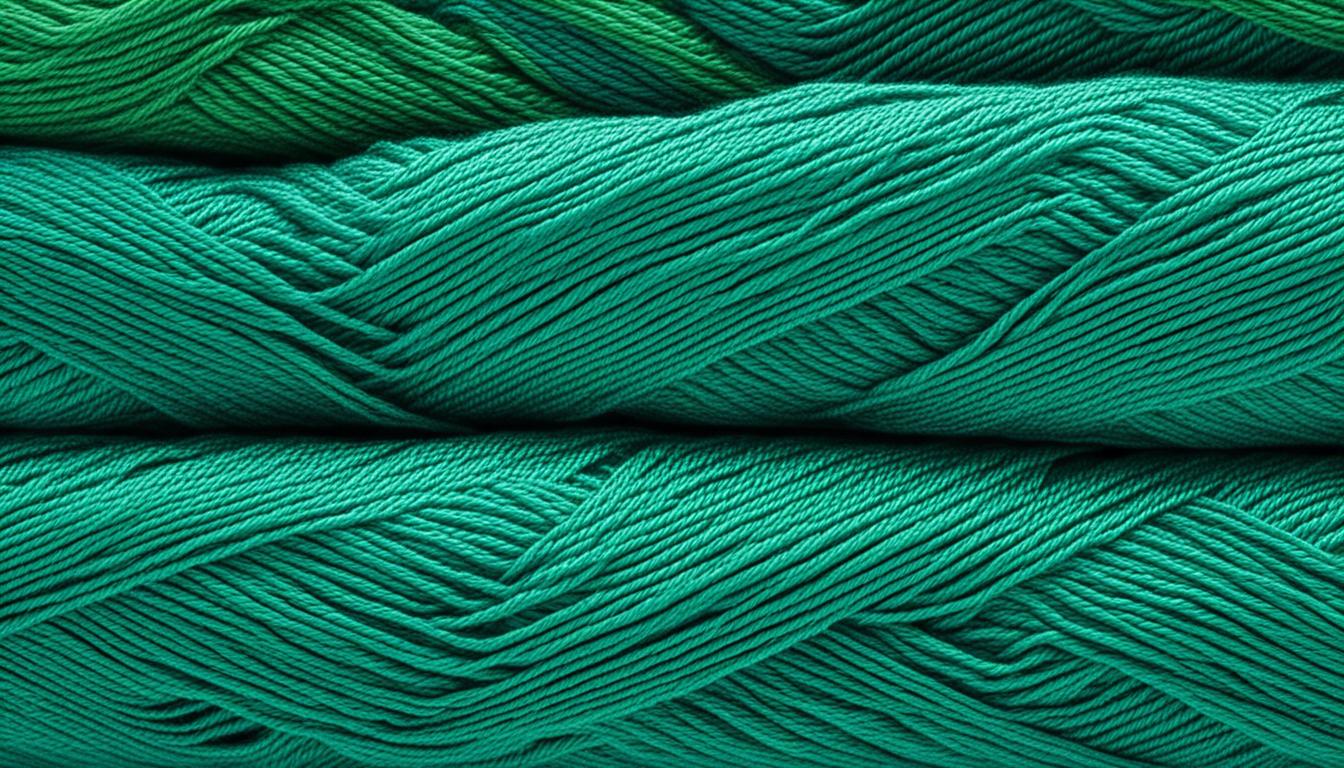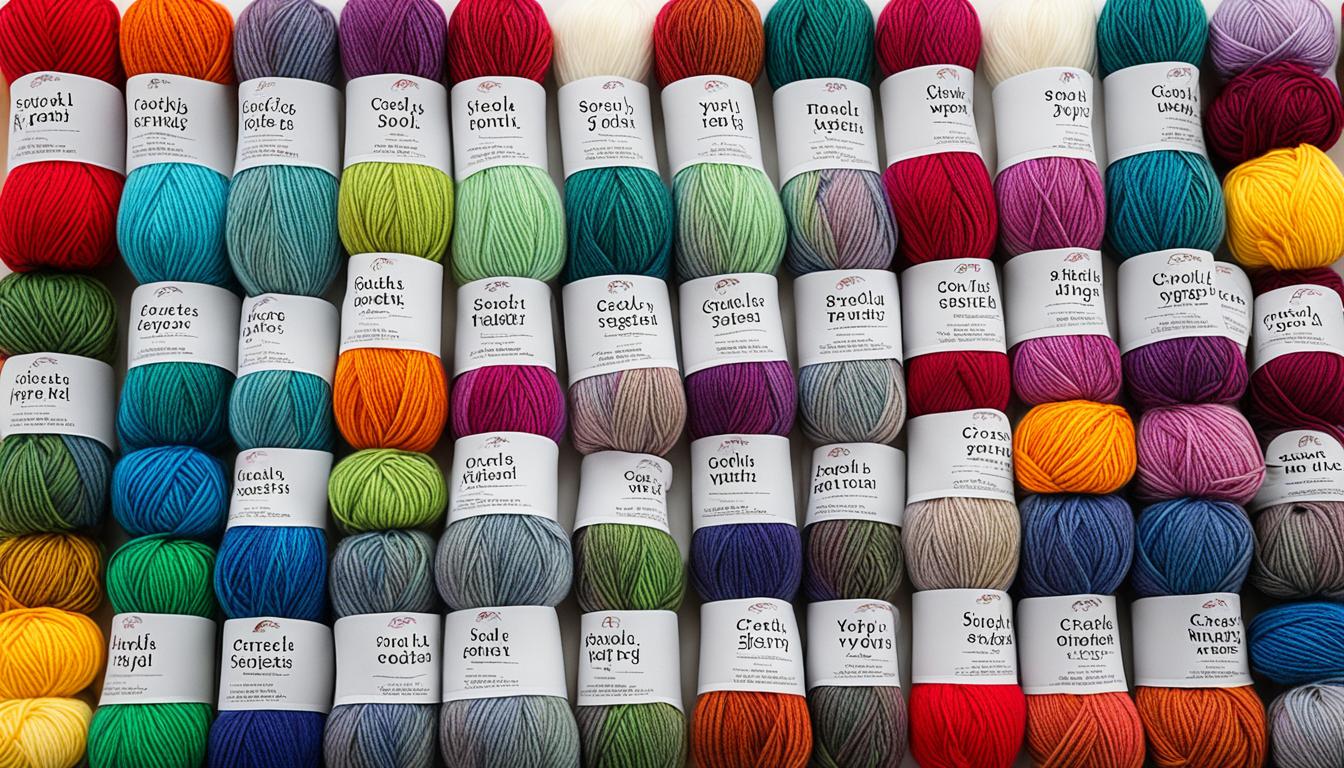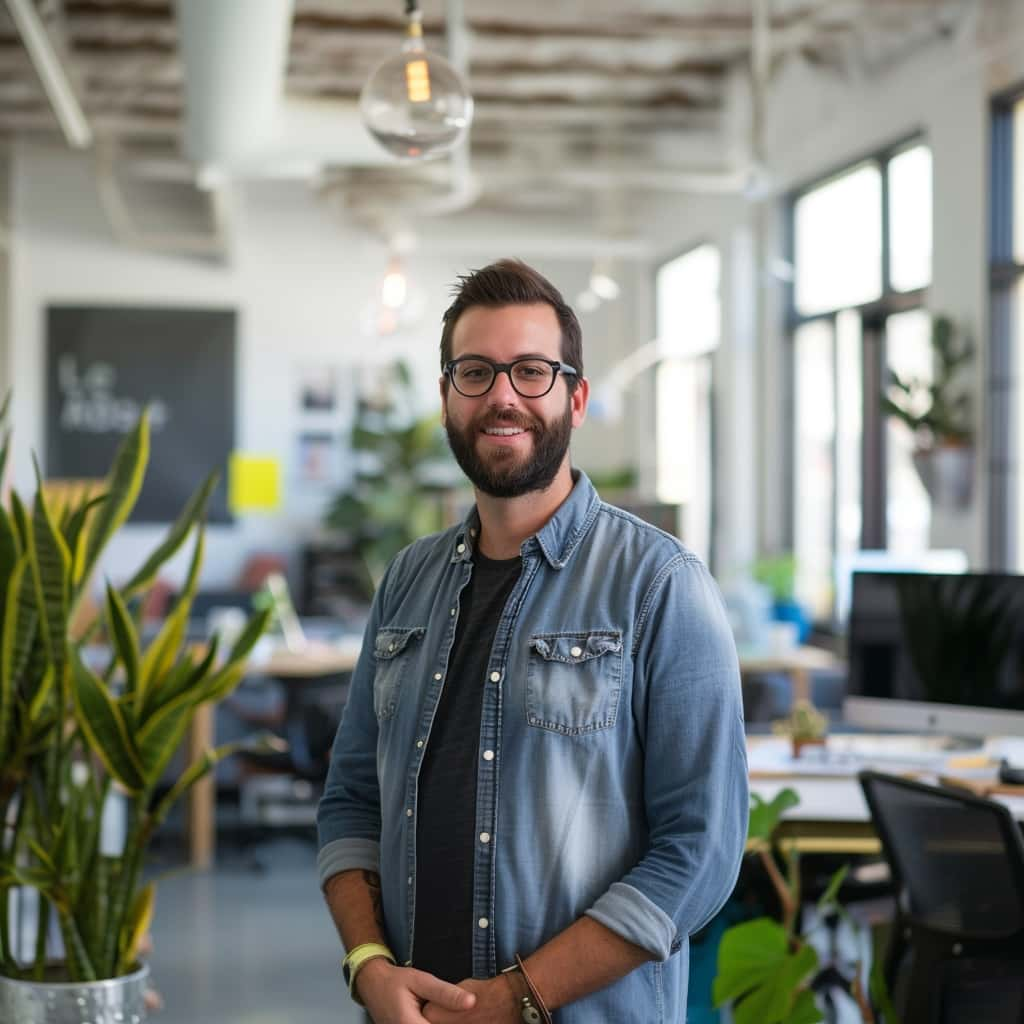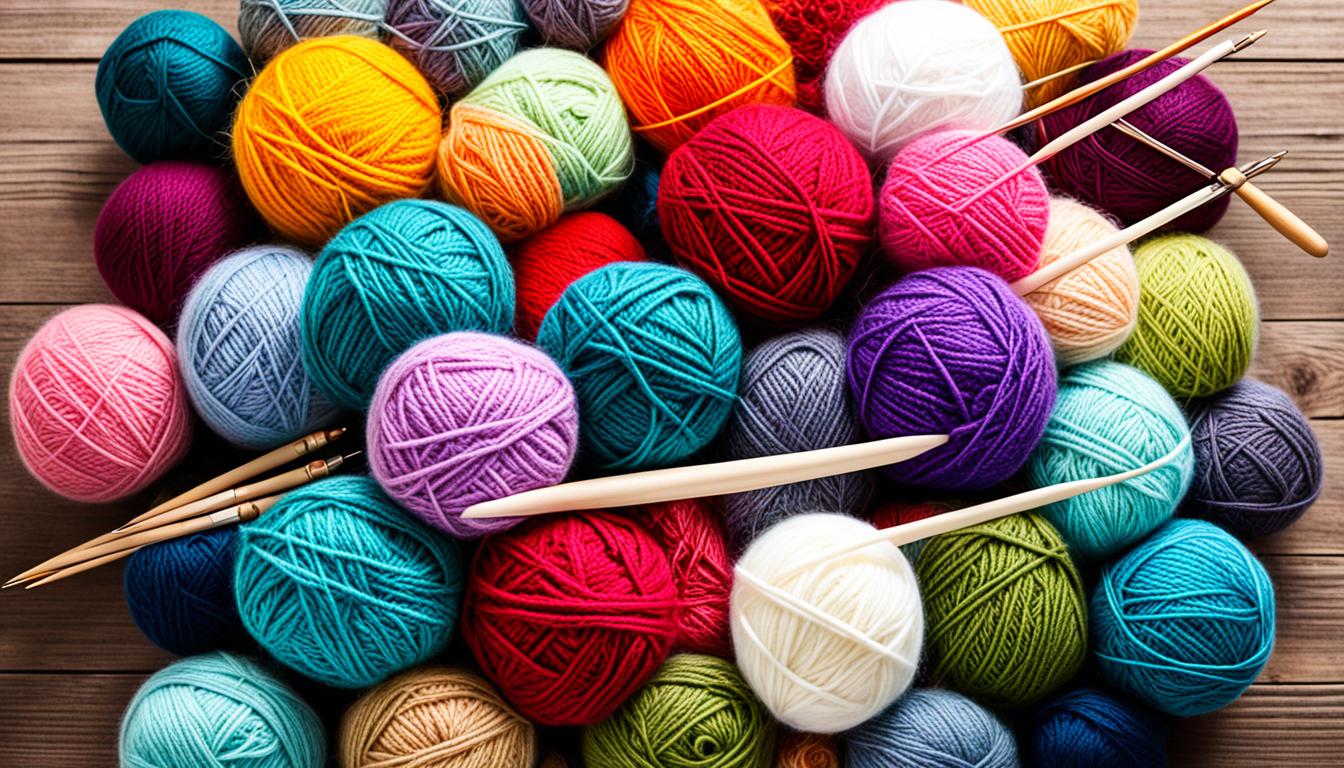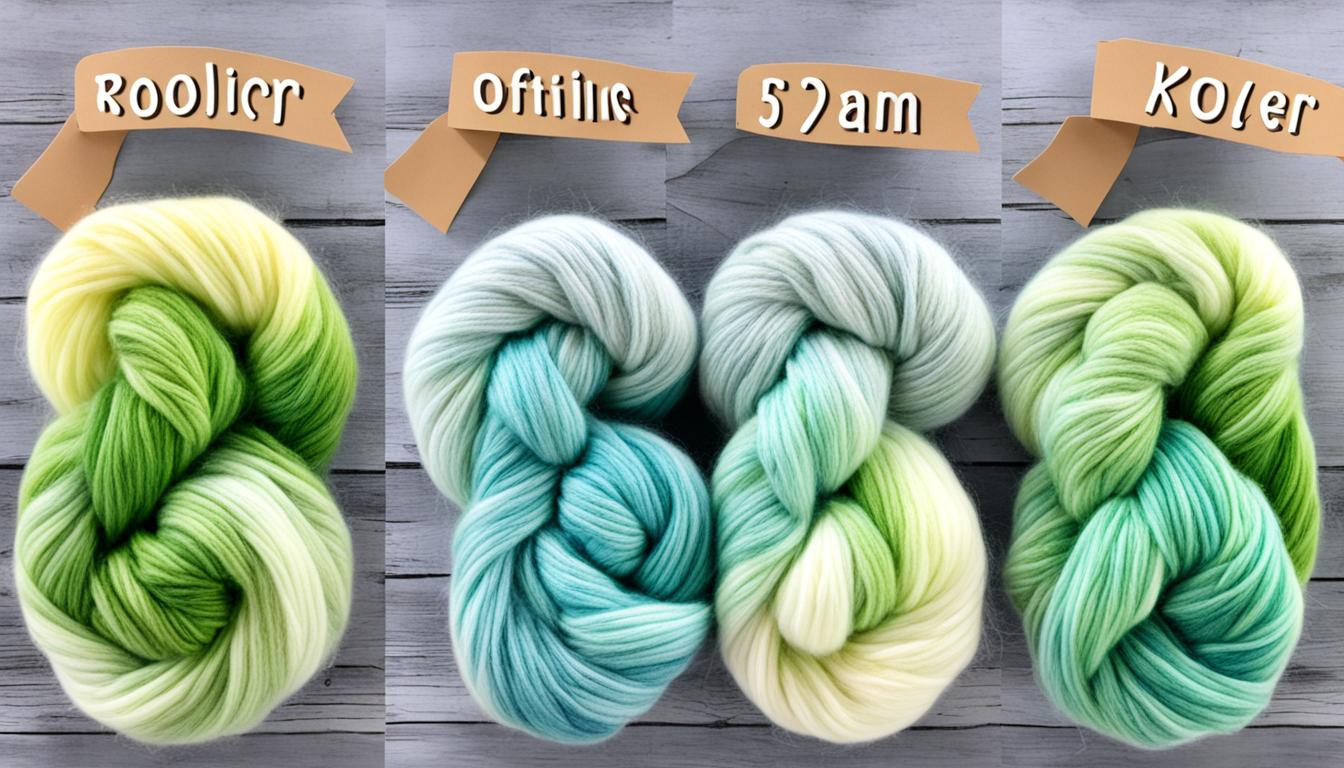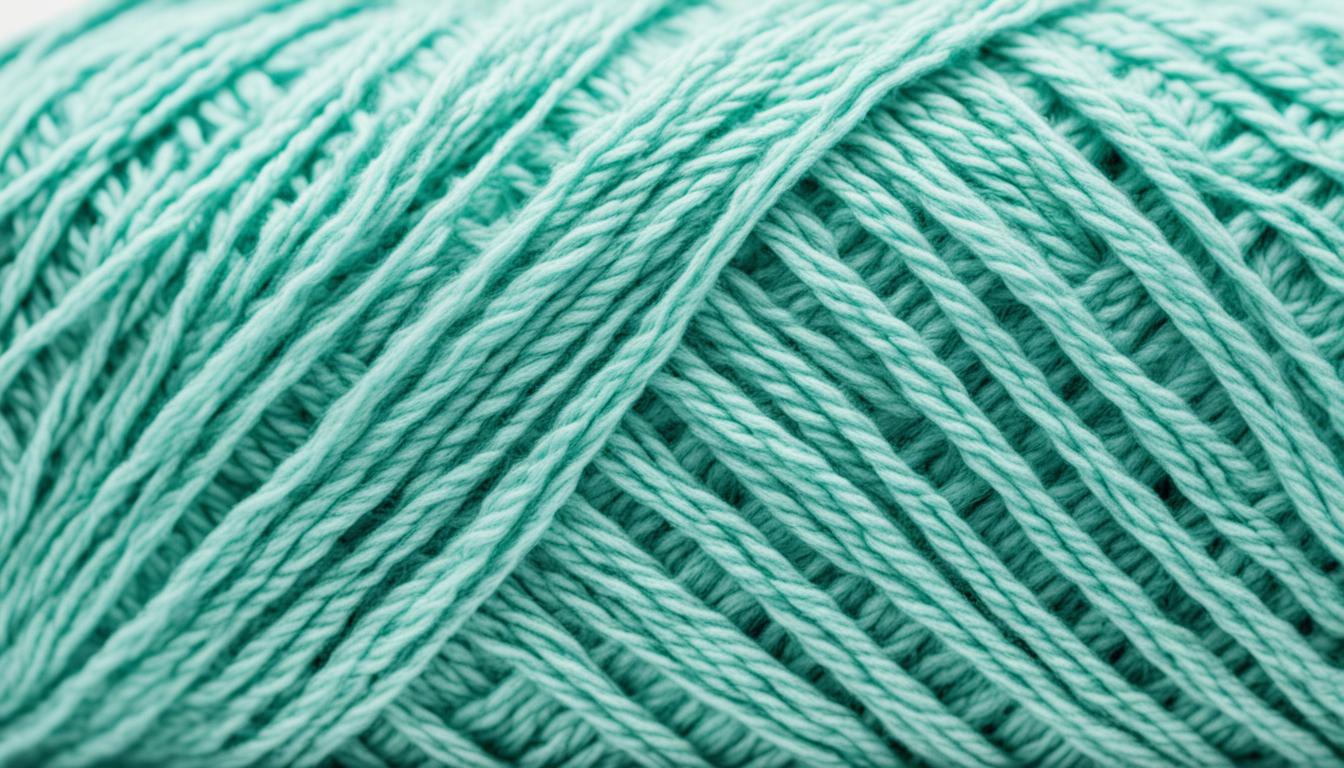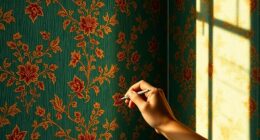Viscose, also referred to as rayon, is a semi-synthetic material that has become popular as a textile material. But is it considered a type of filament yarn? Let’s delve deeper into the details and examine the various types of viscose yarn along with the characteristics of this versatile fiber.
Key Takeaways:
- Viscose, also known as rayon, is a semi-synthetic material made from natural materials like wood pulp or cellulose.
- Viscose belongs to the category of rayon fibers and has different types, including viscose filament yarn and viscose staple fiber.
- Some key properties of viscose include softness, lightweight nature, absorbency, breathability, and versatility.
- Understanding the characteristics of viscose fabric and its benefits can help you make informed choices when it comes to textiles.
- The sustainability of viscose production has been a topic of concern, and advancements have been made to develop more eco-friendly options.
Understanding Viscose Fabric
Viscose fabric, also referred to as rayon fabric, is a popular choice in the textile industry. It is known for its luxurious feel, similar to silk, but at a more affordable price point. Viscose fabric has several characteristics that make it desirable. Let’s explore the viscose fabric characteristics and the benefits of using viscose yarn.
Characteristics of Viscose Fabric
Viscose fabric is lightweight, making it comfortable and easy to wear. Its moisture-wicking properties absorb moisture, keeping the wearer dry and cool. The breathability of viscose fabric allows air to flow through the material, preventing overheating. Its softness provides a gentle touch against the skin, enhancing comfort. Additionally, viscose fabric has excellent color retention, ensuring that it retains its vibrant hues even after multiple washes.
Benefits of Using Viscose Yarn
The benefits of using viscose yarn extend beyond its characteristics. Viscose fabric is incredibly versatile and can be blended with other fibers to enhance its properties. This allows for a wide range of applications in the textile industry. Clothing made from viscose fabric offers a luxurious feel and drapes beautifully on the body. It is commonly used in dresses, blouses, and skirts. In home textiles, such as bedding and window drapes, viscose fabric adds a touch of elegance. Furthermore, viscose fabric’s absorbency and comfort make it a popular choice in medical textiles.
“Viscose fabric is lightweight, breathable, and soft, with excellent color retention. Its versatility and blendability with other fibers make it a preferred choice in various industries.”
Viscose fabric’s desirable characteristics and benefits contribute to its widespread use in the textile industry. Its affordability and resemblance to silk make it a favorite among consumers seeking luxurious fabrics without breaking the bank. Whether it’s for clothing, home textiles, or medical textiles, viscose fabric offers a combination of comfort, functionality, and elegance.
Exploring the Sustainability of Viscose
The sustainability of viscose has been a topic of concern in recent years. While it is made from natural materials, the manufacturing process of viscose has raised environmental and social issues. Traditional viscose production involves the use of toxic chemicals and contributes to deforestation and water pollution. However, advancements in technology have led to the development of more sustainable options such as modal and lyocell fibers. These newer fibers are produced through closed-loop processes, reducing environmental impact. While viscose has the potential to be sustainable, it is important to consider the specific manufacturing practices and certifications associated with the fabric.
When examining the sustainability of viscose fabric, it is crucial to consider the entire lifecycle of the material. This includes not only the raw materials used but also the environmental impact of the manufacturing process and the end-of-life disposal. By evaluating each stage, we can gain a holistic understanding of the fabric’s sustainability.
The manufacturing process of traditional viscose involves treating wood pulp with chemicals such as sodium hydroxide and carbon disulfide to create the viscose solution. These chemicals can have detrimental effects on both the environment and human health if not handled properly. Additionally, the sourcing of wood pulp can contribute to deforestation, which further adds to the ecological impact. It is essential for manufacturers to implement sustainable practices such as responsible sourcing, closed-loop processes, and proper waste management to minimize these environmental drawbacks.
“Advancements in technology have led to the development of more sustainable options such as modal and lyocell fibers.”
Modal and lyocell fibers are considered more environmentally friendly alternatives to traditional viscose. Modal fiber is made from beech trees, which are a rapidly renewable resource. The production of modal involves a closed-loop process where the chemicals used are recycled, reducing waste and minimizing environmental impact. Lyocell fiber, on the other hand, is made from cellulose extracted from sustainably grown trees. Like modal, the production of lyocell also utilizes closed-loop processes, making it a more sustainable option.
It is important to note that the sustainability of viscose fabric also relies on certifications and industry initiatives. Several organizations, such as the Forest Stewardship Council (FSC) and the Sustainable Apparel Coalition (SAC), provide certifications and guidelines to ensure responsible sourcing and sustainable production practices. By looking for fabrics with these certifications, consumers can make more sustainable choices and support brands that prioritize environmental and social responsibility.
While the sustainability of viscose fabric is an ongoing conversation, it is clear that there are steps being taken to improve its environmental impact. The development of modal and lyocell fibers as well as the implementation of sustainable manufacturing practices are promising signs for the future of viscose. However, it remains essential for manufacturers, consumers, and industry stakeholders to continue pushing for transparency, innovation, and accountability to ensure the long-term sustainability of viscose fabric.

The Manufacturing Process of Viscose
When it comes to the manufacturing process of viscose, several steps are involved in transforming wood pulp into the versatile fabric that we know as viscose. Let me take you through the process in detail.
Step 1: Collection of Wood Pulp
The process begins with the collection of wood pulp from trees or woody plants. This raw material serves as the foundation for the production of viscose yarn.
Step 2: Chemical Treatment
The collected wood pulp goes through a chemical treatment to dissolve it and remove any impurities. This treatment creates a viscous solution known as viscose.
Step 3: Filtration and Degassing
The viscose solution then undergoes filtration to remove any remaining impurities, ensuring a smooth and consistent mixture. After filtration, the solution is degassed to eliminate air bubbles that may affect the final product’s quality.
Step 4: Spinneret Extrusion
Next, the degassed viscose solution is forced through a spinneret, which is a metal plate with tiny holes. The spinneret extrudes the viscose solution into thin filaments, which are solidified once they come into contact with a coagulating bath.
Step 5: Yarn Spinning
After the filaments are formed, they are spun into yarn. This yarn can then be used to create a wide range of viscose fabric products, from clothing to home textiles.
It is important to note that the manufacturing process of viscose involves the use of certain chemicals, such as sodium hydroxide and carbon disulfide, which can have environmental and health impacts if not handled properly. Careful management and adherence to safety protocols are crucial to minimize any potential risks.
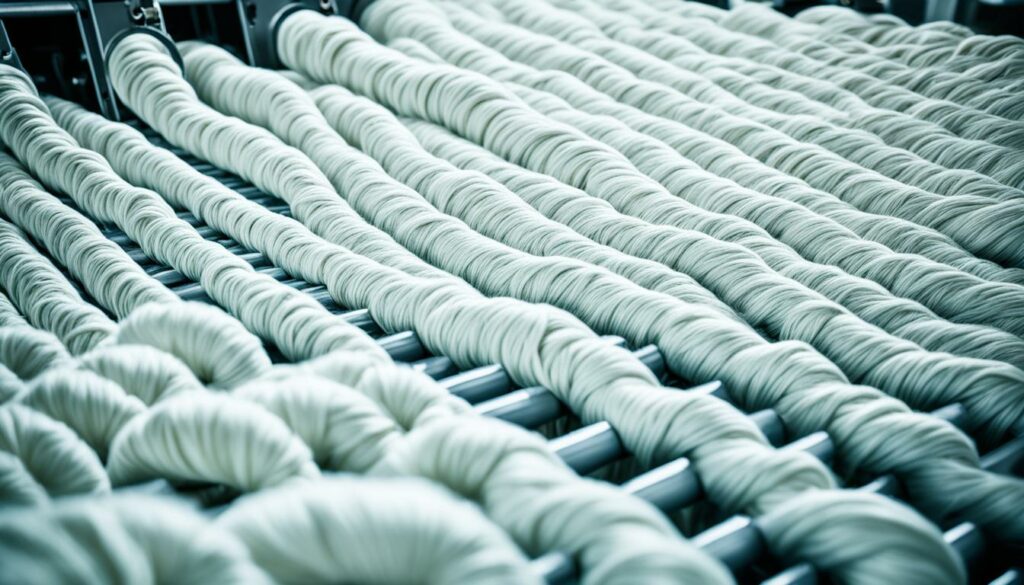
| Manufacturing Process | Key Steps |
|---|---|
| 1. Collection of Wood Pulp | Wood pulp is collected from trees or woody plants. |
| 2. Chemical Treatment | Wood pulp is chemically treated to dissolve it and remove impurities. |
| 3. Filtration and Degassing | Viscose solution is filtered and degassed to ensure a smooth mixture. |
| 4. Spinneret Extrusion | Viscose solution is forced through a spinneret to create filaments. |
| 5. Yarn Spinning | Filaments are spun into yarn, which can be used to create viscose fabric. |
Viscose vs Other Fabrics
When it comes to choosing the right fabric for your clothing or textile needs, there are several options to consider. Viscose, cotton, polyester, and silk are some of the most commonly compared fabrics in terms of their properties and characteristics.
Viscose vs Cotton
Both viscose and cotton are known for their absorbency and breathability. Viscose, however, offers an additional advantage with its silk-like luster and drape. This makes it a popular choice for those seeking a more luxurious alternative to cotton. Whether you prefer the softness and versatility of viscose or the natural feel of cotton, the choice between the two depends on personal preferences and specific requirements.
Viscose vs Polyester
Viscose has a more natural and breathable feel compared to polyester. While polyester is known for its durability and resistance to wrinkles, viscose fabric offers a softer and more comfortable experience. If you value breathability and a natural feel, viscose may be the better option for you.
Silk vs Viscose Yarn
When comparing silk and viscose yarn, it’s important to consider factors such as cost and maintenance. Silk is known for its luxurious luster and drape, but it can be expensive and delicate to care for. Viscose yarn, on the other hand, can mimic the look and feel of silk while being more affordable and easier to care for. If you’re looking for a silk-like alternative without the high price tag and delicate maintenance, viscose yarn is a great choice.
Each fabric has its own unique characteristics and uses. Whether you’re looking for absorbency and breathability like cotton, a natural feel like viscose, or the luxurious luster of silk, the choice ultimately depends on your personal preferences and specific requirements.
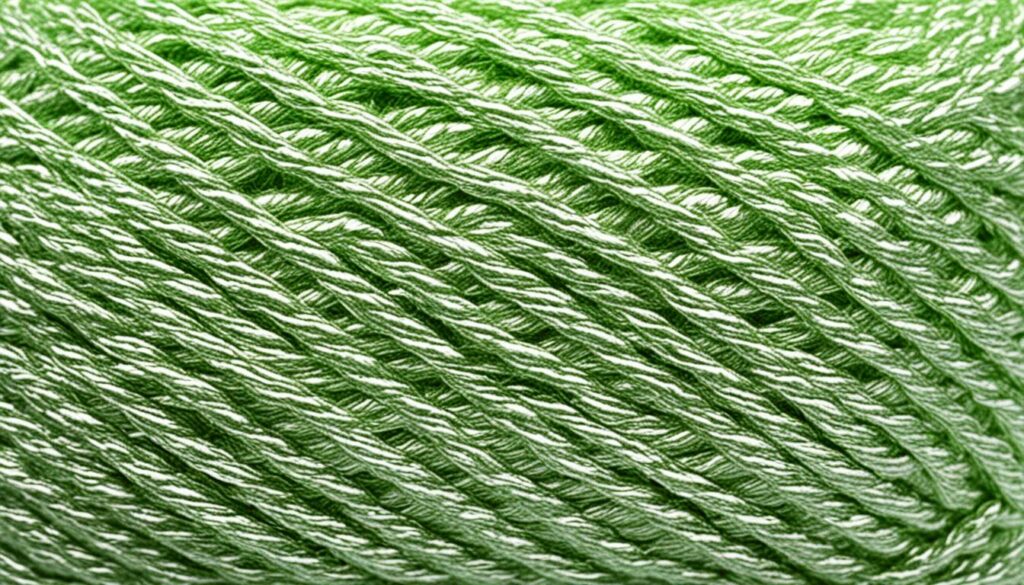
| Feature | Viscose | Cotton | Polyester | Silk |
|---|---|---|---|---|
| Absorbency | High | High | Low | Low |
| Breathability | High | High | Low | Low |
| Drape | Silk-like | N/A | N/A | Luxurious |
| Cost | Affordable | Affordable | Affordable | Expensive |
| Maintenance | Easy | Easy | Easy | Delicate |
The Environmental Impact of Viscose Production
The traditional manufacturing process of viscose involves the use of toxic chemicals and generates waste that can harm the environment. The extraction of wood pulp can contribute to deforestation if not done sustainably. Chemicals such as sodium hydroxide and carbon disulfide used in the production process can have harmful effects on the environment and human health if not managed properly.
However, we are dedicated to making viscose production more eco-friendly by implementing closed-loop processes and focusing on sustainable sourcing. By sourcing wood pulp from sustainable forests, we minimize the negative impact on deforestation and promote responsible forestry practices.
As part of our commitment to sustainability, we prioritize the reduction of toxic chemical usage and waste generation. Alternative manufacturing processes that rely on closed-loop systems recycle and reuse chemicals, minimizing environmental harm. These closed-loop processes ensure that harmful chemicals are contained and do not contaminate water sources.
Advancements in Eco-Friendly Viscose Yarn
Our ongoing research and development efforts are focused on creating eco-friendly viscose yarn. Through innovative techniques and responsible manufacturing practices, we aim to minimize the environmental impact of our products.
By investing in sustainable technologies and utilizing renewable energy sources, we work towards a greener viscose production process. Our goal is to reduce greenhouse gas emissions, energy consumption, and water usage throughout the production cycle. Through these efforts, we strive to contribute to a more sustainable textile industry.
Together, we can make a difference in the environmental impact of viscose production. By choosing products made from eco-friendly viscose yarn and supporting sustainable practices, we can create a more sustainable and responsible future for the textile industry.
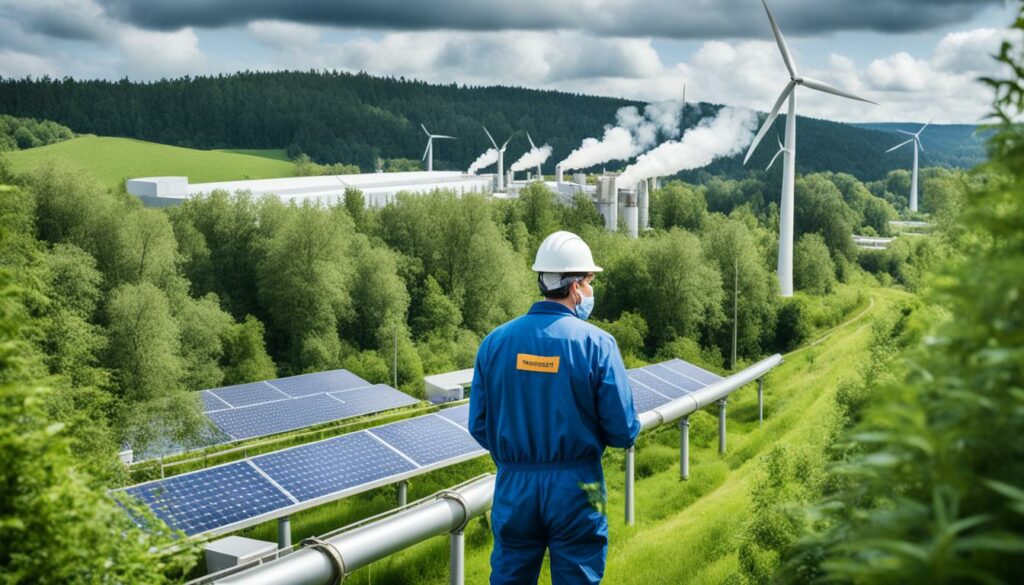
Key Points:
- The traditional viscose production process involves the use of toxic chemicals and generates waste that can harm the environment.
- Sustainable sourcing of wood pulp from certified forests helps reduce deforestation.
- Closed-loop processes in manufacturing minimize the use of toxic chemicals and promote recycling.
- Advancements in eco-friendly viscose yarn focus on reducing environmental impact through responsible manufacturing practices and renewable energy sources.
Advancements in Sustainable Viscose Fabric
As we continue to prioritize sustainability in the textile industry, advancements in the production of sustainable viscose fabric have become a crucial focus. While the traditional production of viscose has raised environmental concerns, innovative developments have led to more eco-friendly alternatives.
“Modal and lyocell fibers, considered more sustainable options, have emerged as alternatives to conventional viscose.”

Bamboo viscose fabric is one such innovation that has gained significant attention in recent years. Bamboo is a highly renewable resource that grows quickly without the need for pesticides or fertilizers. The use of bamboo as a source of cellulose for viscose production has several environmental benefits, including reduced water consumption and lower carbon emissions.
In addition to bamboo, other unconventional and sustainable sources of cellulose, such as milk, orange peels, and coffee grounds, are being explored. These efforts aim to further enhance the eco-friendliness of viscose yarn and reduce its overall environmental impact.
Eco-friendly Viscose Production Processes
One of the key advancements in sustainable viscose fabric is the adoption of closed-loop processes. Modal and lyocell fibers are produced using closed-loop systems, which recycle chemicals and minimize waste. These processes help reduce the environmental impact of viscose production by conserving water and energy while minimizing chemical pollution.
By implementing these eco-friendly production processes, manufacturers are working towards creating fabrics that align with the principles of sustainability without compromising on quality or performance.
The Benefits of Sustainable Viscose
The use of sustainable viscose fabric brings several advantages to both the industry and consumers. Firstly, it reduces reliance on non-renewable resources and contributes to the conservation of biodiversity. Secondly, the durability and versatility of the fabric make it suitable for various applications, from apparel to home textiles.
“Sustainable viscose fabric offers an eco-friendly choice without compromising on comfort and aesthetics.”
Furthermore, sustainable viscose fabric provides a comfortable and breathable alternative to synthetic materials, allowing for better air circulation and moisture absorption. This makes it an excellent choice for garments and textiles that come into direct contact with the skin.
| Advancements in Sustainable Viscose Fabric | Benefits |
|---|---|
| Use of bamboo and other sustainable cellulose sources | Reduces environmental impact |
| Closed-loop production processes | Recycles chemicals and minimizes waste |
| Durability and versatility | Applicable to various industries |
| Eco-friendly alternative to synthetic materials | Comfortable and breathable |
The advancements in sustainable viscose fabric present a positive step forward for the textile industry. By embracing these innovations, we can continue to meet consumer demand for fashionable and environmentally conscious products.
As we move towards a more sustainable future, it is encouraging to see the ongoing efforts and advancements in the production of eco-friendly viscose yarn and fabric. By exploring new sources of cellulose and adopting closed-loop processes, the industry is working towards reducing its environmental impact and creating fabrics that are both sustainable and stylish.
The Versatility of Viscose Fabric
Viscose fabric, also known as rayon, offers a wide range of applications across various industries. Its versatility makes it a popular choice in the fashion industry, where it is used to create stylish clothing items such as dresses, blouses, and skirts. The softness, drape, and lustrous appearance of viscose fabric give it an elegant touch that can mimic the luxurious feel of silk.
In addition to fashion, viscose fabric finds its place in home textiles, adding a touch of luxury to any space. It is commonly used in bedding, window drapes, and upholstery, enhancing the comfort and aesthetic appeal of homes. The natural breathability of viscose fabric makes it an excellent choice for creating textiles that promote a comfortable and cozy environment.
Another industry that benefits from the versatility of viscose fabric is the medical textile industry. Viscose fabric’s absorbency and comfort make it a suitable material for applications such as wound dressings and medical garments. Its soft and gentle texture ensures patient comfort while maintaining essential functionalities in a medical setting.
“Viscose fabric’s versatility is derived from its ability to blend harmoniously with other fibers, allowing for the creation of unique textiles with enhanced properties. From blending with cotton for added breathability to combining with synthetic fibers for increased durability, the possibilities are endless when it comes to customizing fabrics with viscose.”
This unique blend of versatility, style, and functionality makes viscose fabric a preferred choice across industries. Its ability to adapt and enhance the properties of other fibers makes it a valued material for creating textiles that cater to various needs and preferences.
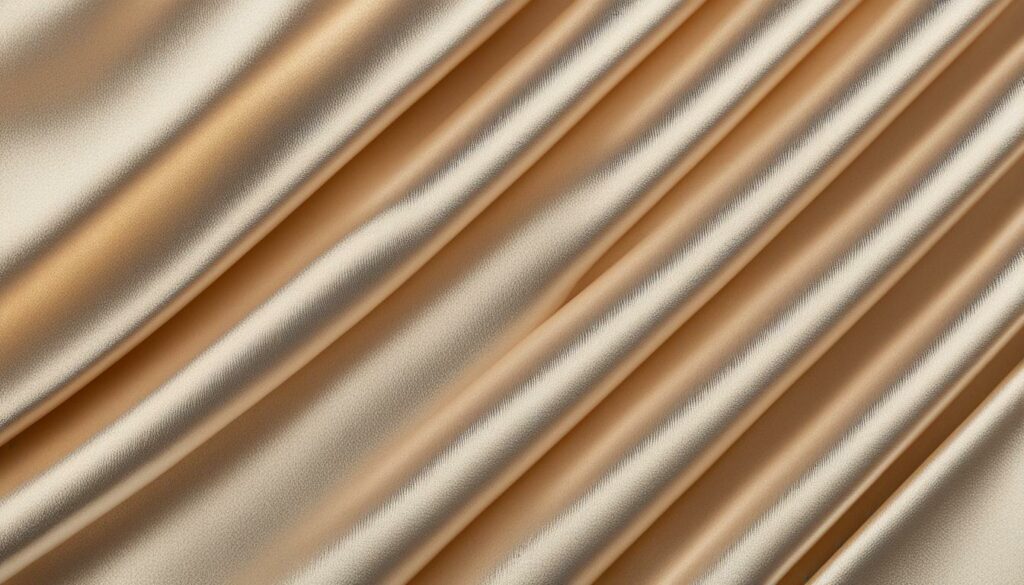
Incorporating Viscose Fabric into Different Applications
Viscose fabric has become a staple in fashion, offering a desirable combination of comfort and style. Designers embrace its silky feel and luxurious drape to create flowing dresses, chic blouses, and fashionable skirts. The versatility of viscose fabric allows it to cater to different design aesthetics, from casual to formal wear.
In home textiles, viscose fabric can transform spaces into cozy retreats. Whether it’s bedding with a silky touch, elegant window drapes that filter natural light, or sumptuous upholstery that enhances the aesthetic appeal of furniture, viscose fabric adds a touch of sophistication to every corner of the home.
The medical textile industry benefits from the properties of viscose fabric, using it to create bandages, wound dressings, and medical garments. The absorbency of viscose fabric ensures efficient moisture management, offering comfort and promoting quick healing. Its softness and gentle texture make it ideal for applications where patient comfort is paramount.
“Viscose fabric’s versatility not only extends to its uses but also to its ability to blend with other fibers. This allows designers and manufacturers to create textiles with unique and desired properties, catering to specific needs and preferences.”
Summary
Viscose fabric’s versatility makes it a sought-after material across industries. Its applications range from fashion, home textiles, to medical textiles. Whether it’s creating stylish clothing items, adding a touch of luxury to homes, or providing comfort in medical settings, viscose fabric delivers in terms of aesthetics, functionality, and adaptability. By blending harmoniously with other fibers, viscose fabric can enhance and customize textiles to meet specific requirements, making it a valuable addition to any industry.
The Future of Viscose Fabric
The future of viscose fabric is shaped by several key factors, including evolving consumer demand, technological advancements, and shifts in economic trends. As the textile industry continues to evolve, the market for viscose fabric, including its synthetic variants, is expected to witness significant growth in the coming years.
Companies such as Aditya Birla Group, Lenzing, and Sanyou are at the forefront of the synthetic viscose fiber market. These industry leaders are driving innovation and developing new technologies to meet the growing demand for high-quality viscose fabrics.
Anticipated future demand for viscose fabric is fueled by various factors. Technological advancements in manufacturing processes enable improved production efficiency and result in higher-quality fabrics. These advancements also contribute to the development of innovative blends and finishes that enhance the performance and versatility of viscose fabrics.
Changing consumer behaviors and preferences also play a significant role in driving future demand for viscose fabric. As more consumers prioritize sustainable and eco-friendly materials, there is a growing demand for viscose fabrics that are produced using environmentally friendly processes and sources.
The future of viscose fabric is bright, with opportunities for new players and technologies to emerge. The market will continue to evolve as we embrace technological advancements, respond to changing consumer preferences, and align with global trends.
Key highlights for the future of viscose fabric:
- Rapid growth in the synthetic viscose fiber market
- Aditya Birla Group, Lenzing, and Sanyou as industry leaders
- Technological advancements driving improved production efficiency
- Development of innovative blends and finishes for enhanced performance
- Increased demand for sustainable and eco-friendly viscose fabrics
- Potential for new players and technologies to shape the market
Overall, the future of viscose fabric is full of promise and potential. As the industry continues to adapt and innovate, we can expect to see continued growth in the market driven by technological advancements, changing consumer preferences, and a focus on sustainability.
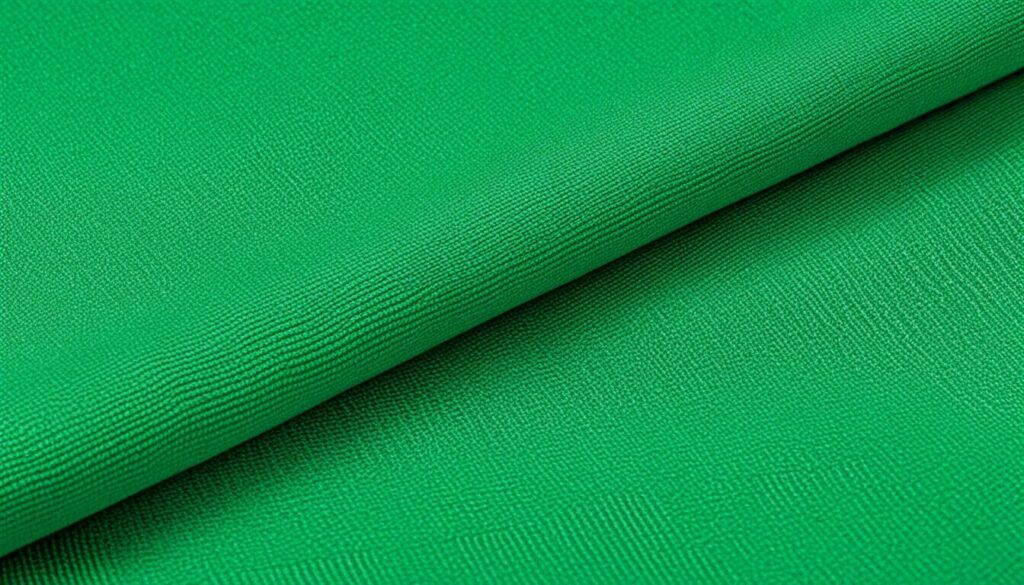
| Leading Companies | Market Share |
|---|---|
| Aditya Birla Group | 30% |
| Lenzing | 25% |
| Sanyou | 20% |
| Other Players | 25% |
Conclusion
Viscose fabric, also known as rayon, offers a range of benefits that have made it a popular choice in the textile industry. Its softness, lightweight nature, and versatility make it suitable for various applications in fashion, home textiles, and medical textiles. However, concerns have been raised about the sustainability and environmental impact of the manufacturing process.
Fortunately, advancements in technology have led to the development of more sustainable options, such as modal and lyocell fibers. These fibers are produced through closed-loop processes that minimize waste and reduce environmental impact. As consumer demand for eco-friendly textiles increases, the future of viscose fabric will be influenced by changes in demand, technological advancements, and economic trends.
There is great potential for further innovation in the production of eco-friendly viscose fabric. By embracing sustainable practices and exploring new sources of cellulose, such as bamboo, milk, orange peels, and coffee grounds, the industry can improve the environmental footprint of viscose fabric.
In conclusion, the textile industry can continue to enjoy the benefits of viscose fabric while also moving towards a more sustainable and environmentally conscious future.
